Overview
The following guide is designed to help you deploy an example app on Aptible. During this process, Aptible will launch containers to run a Python app with a web server, a background worker, a Managed PostgreSQL Database, and a Redis instance.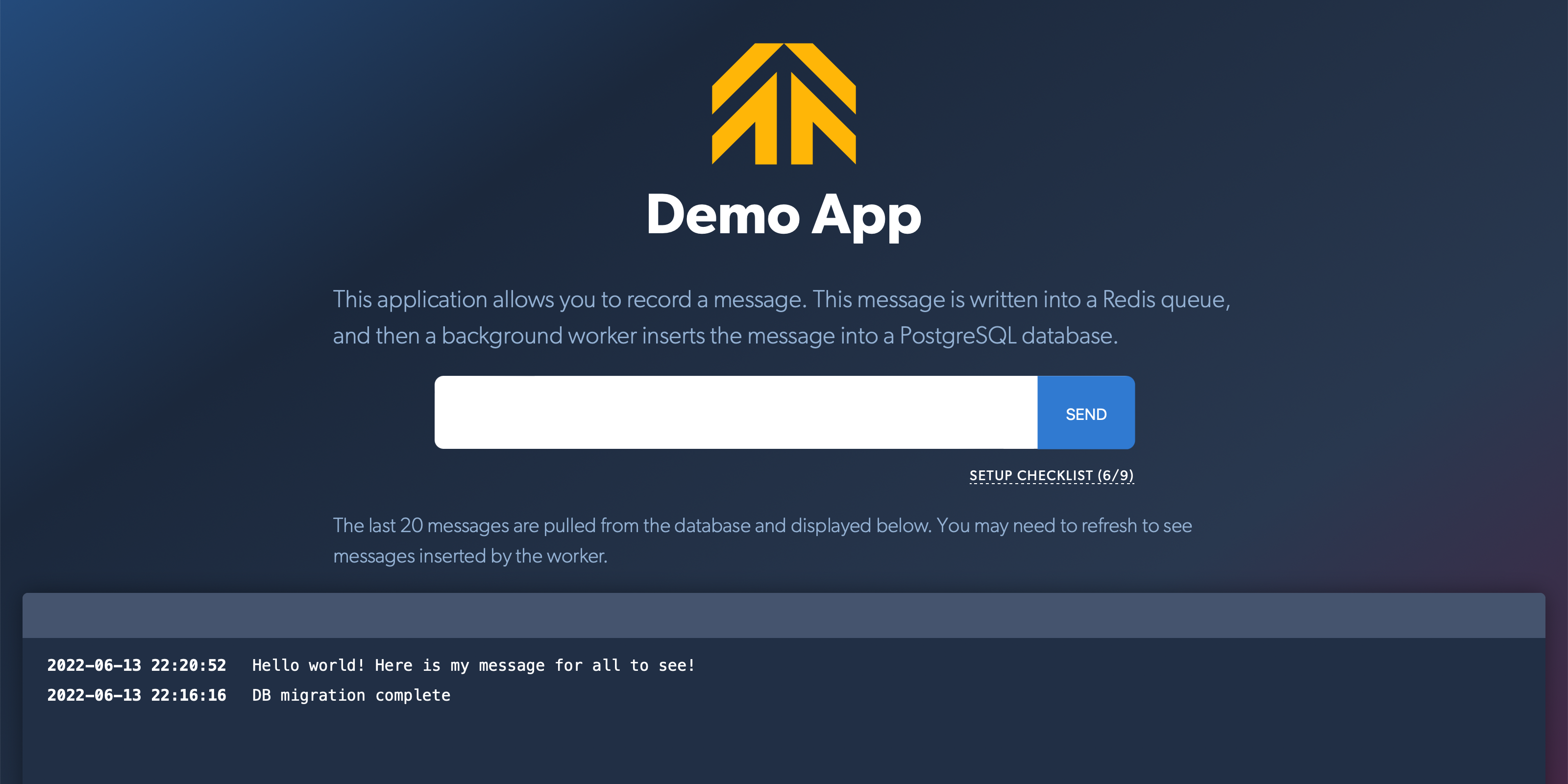
Deploy App
Prerequisite: Ensure you have Git installed.
1
Deploy with Git Push
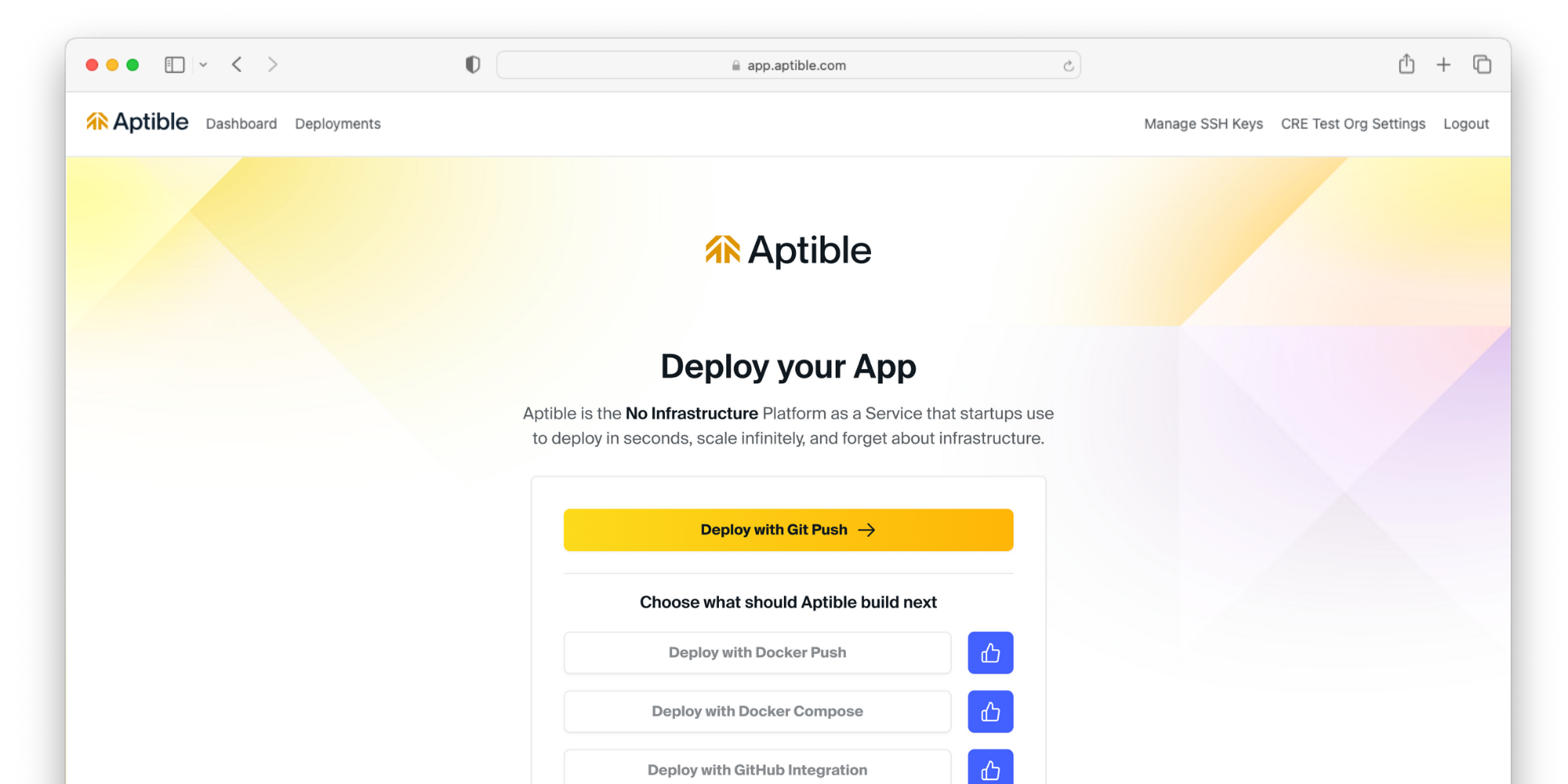
2
Add an SSH key
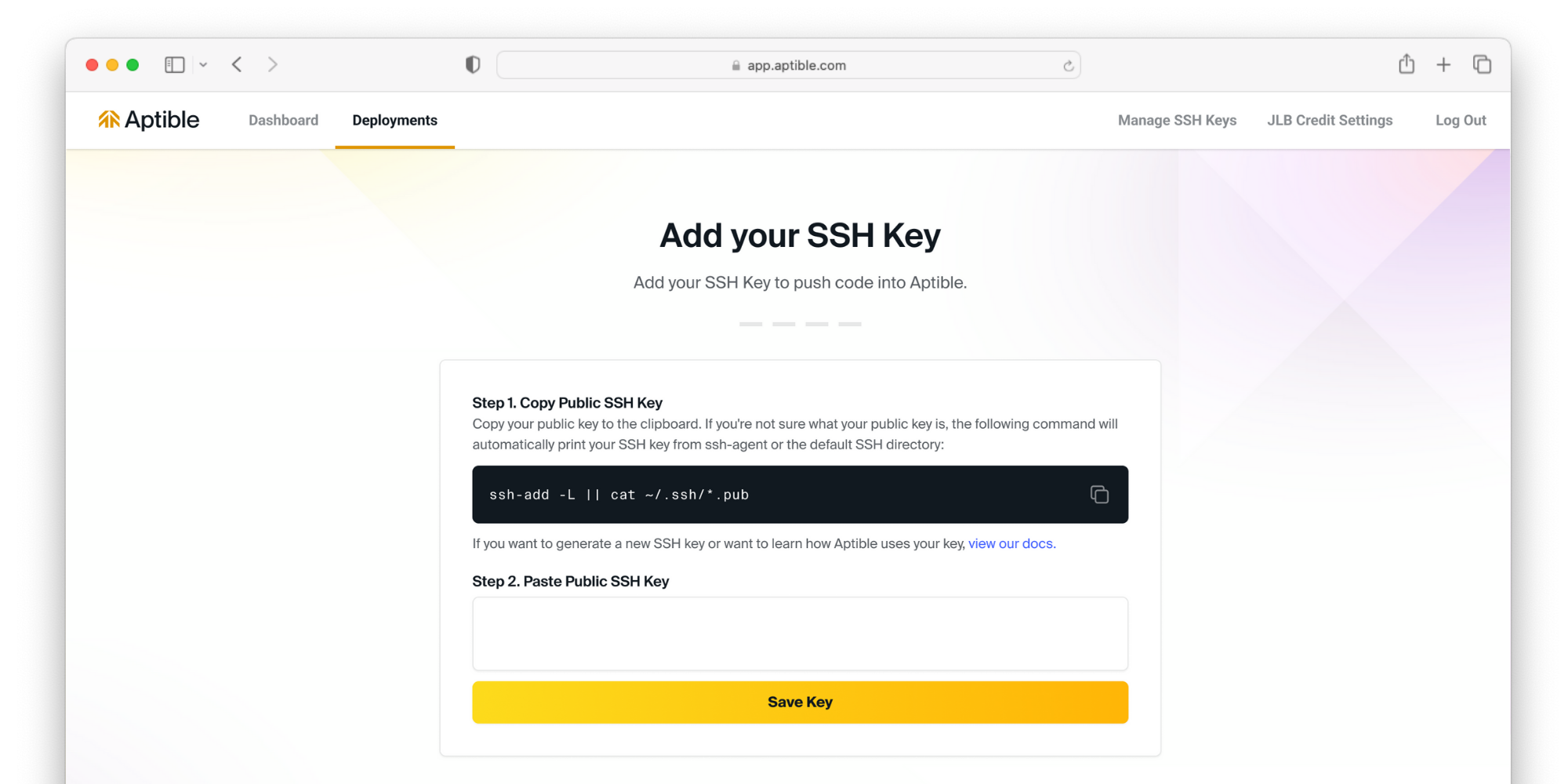
3
Environment Setup
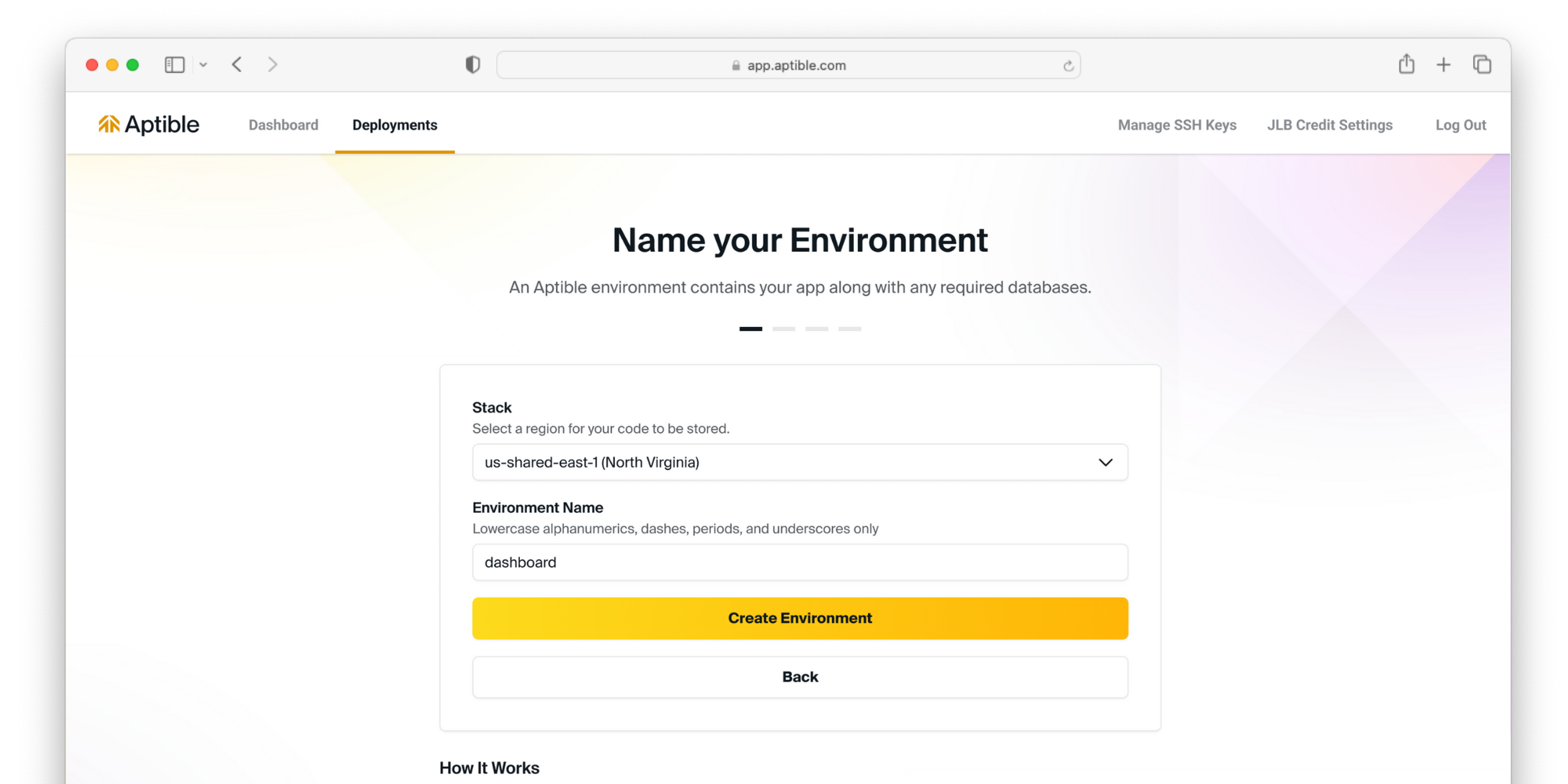
4
Prepare the template
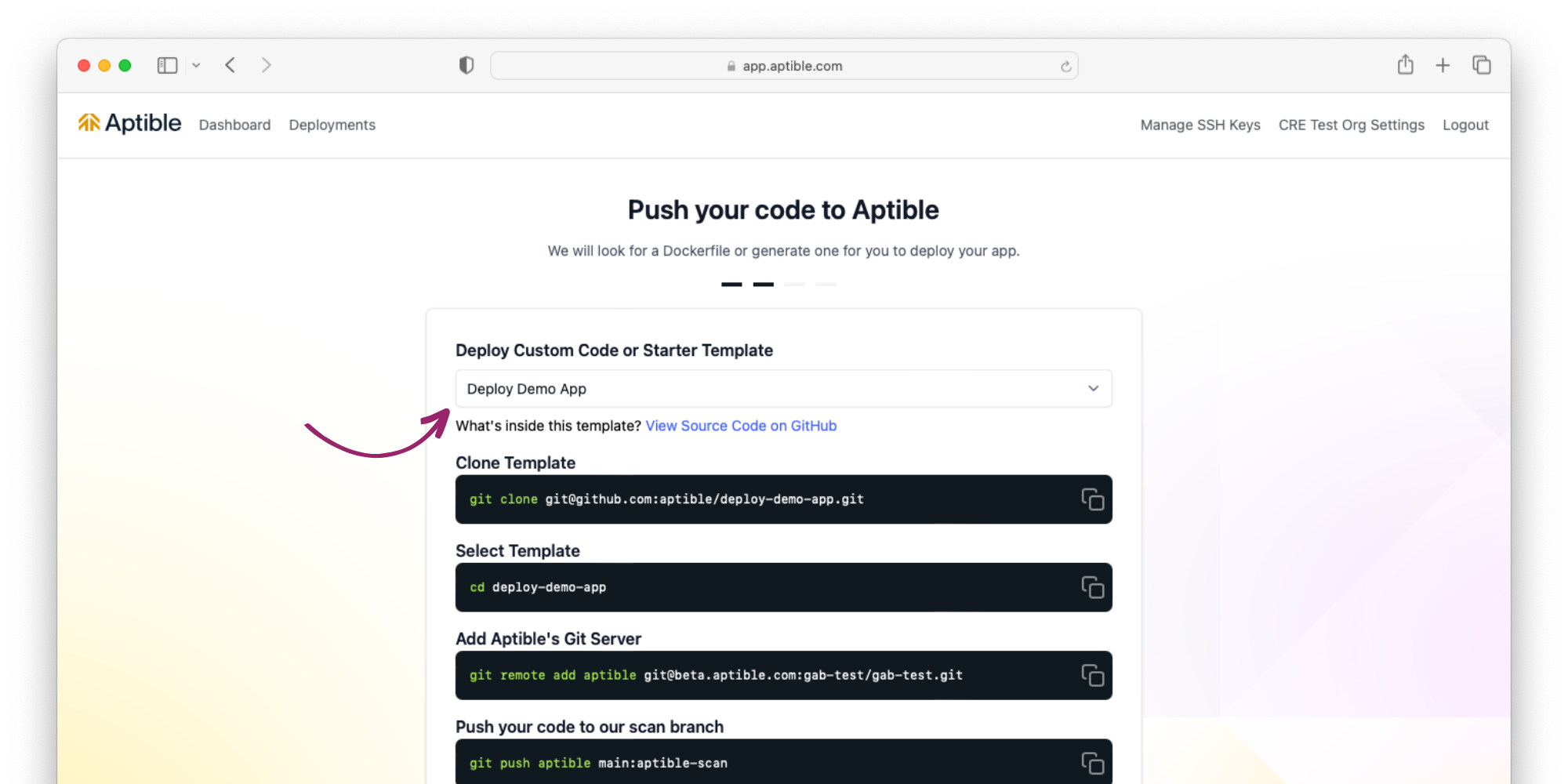
5
Fill environment variables and deploy
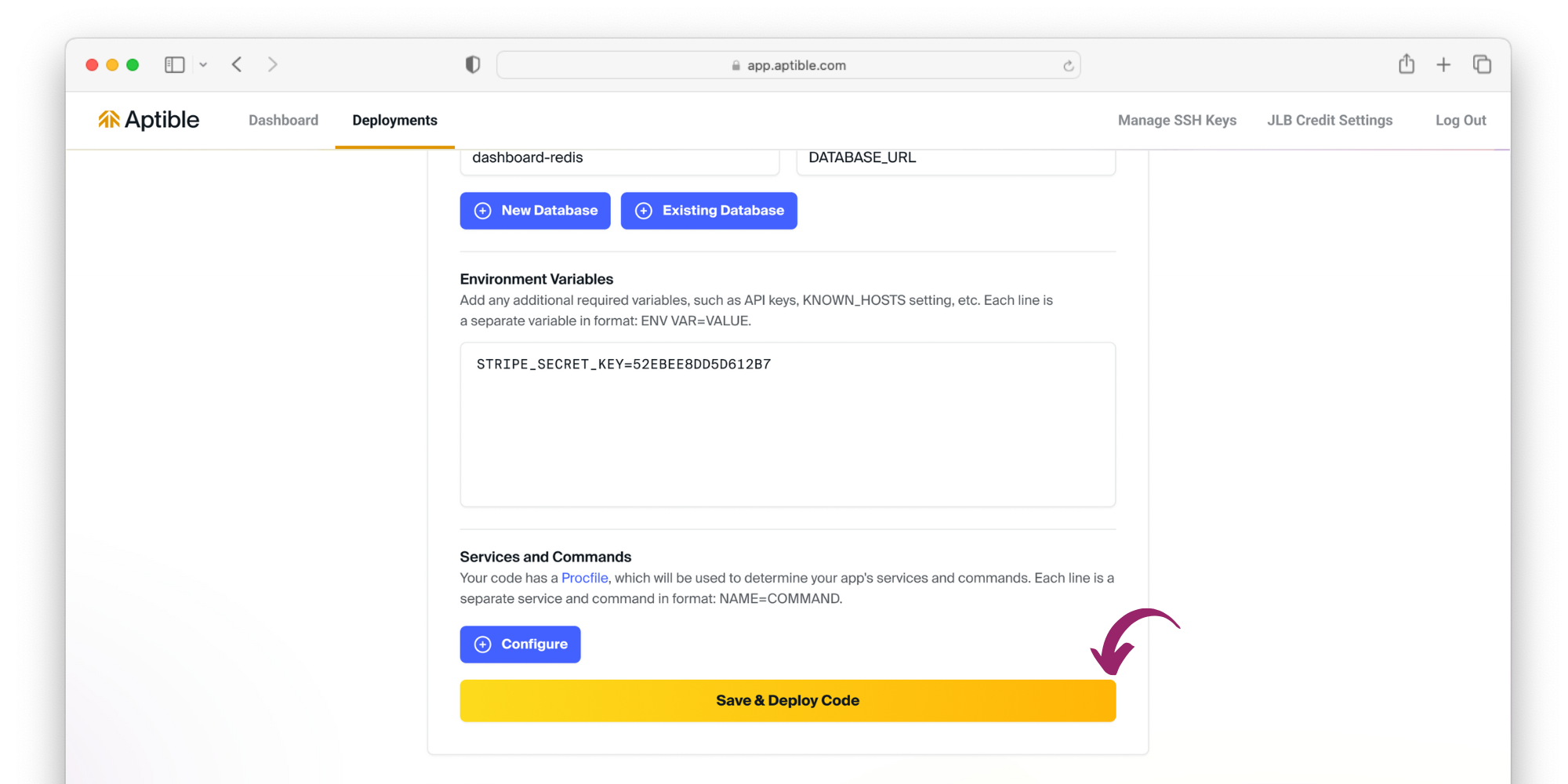

6
Expose your app to the internet

View your deployed app
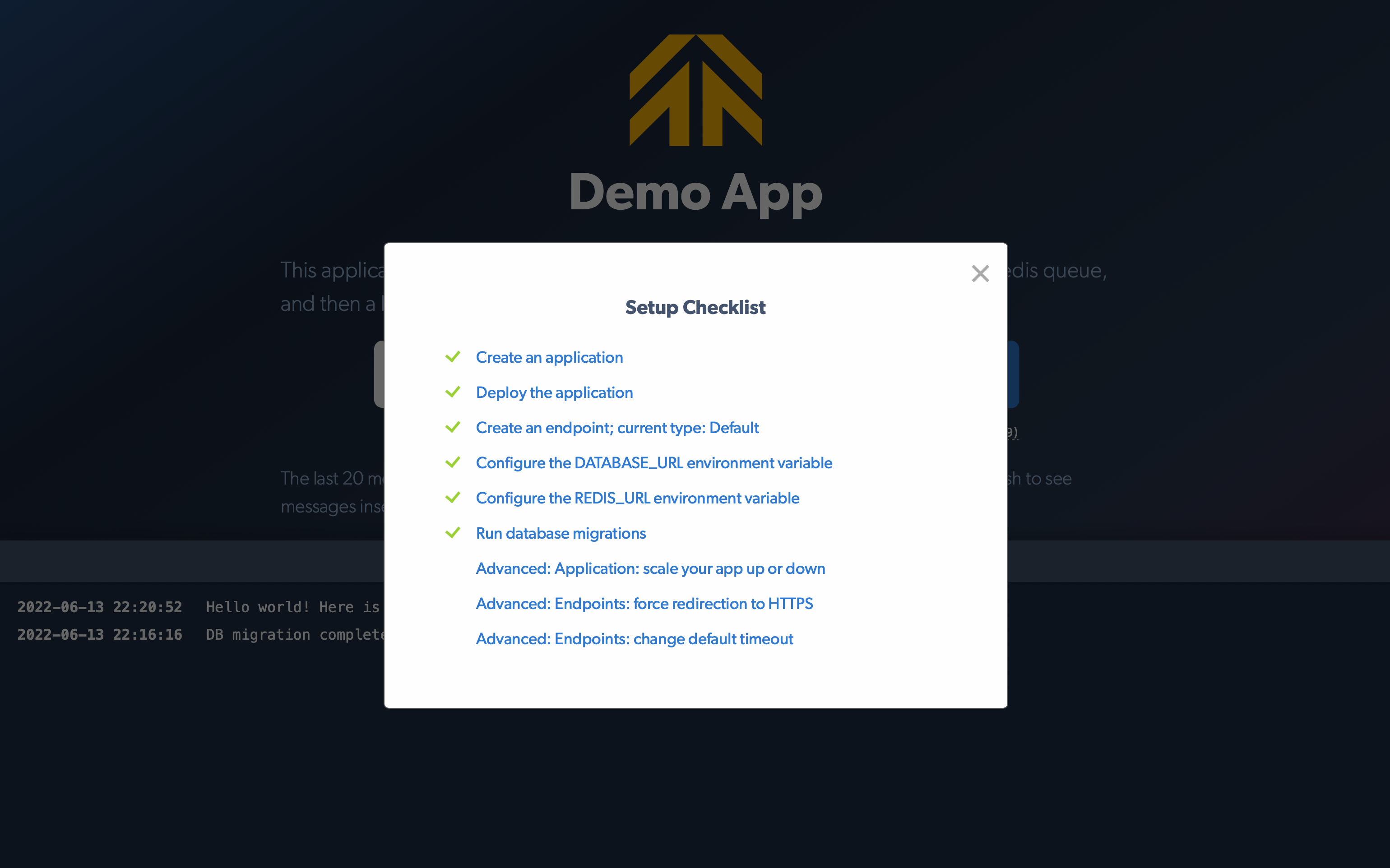
Continue your journey
Deploy custom code
Read our guide for deploying custom code on Aptible.

